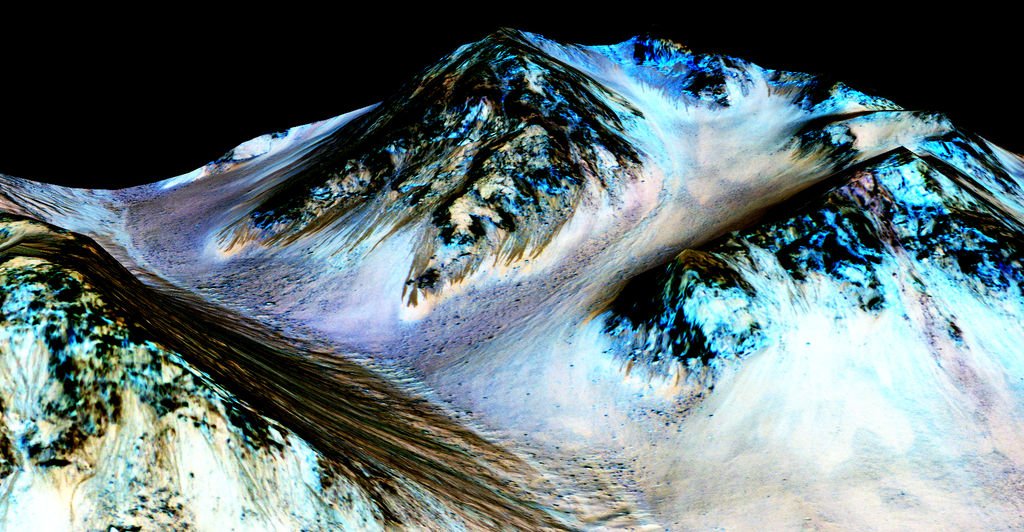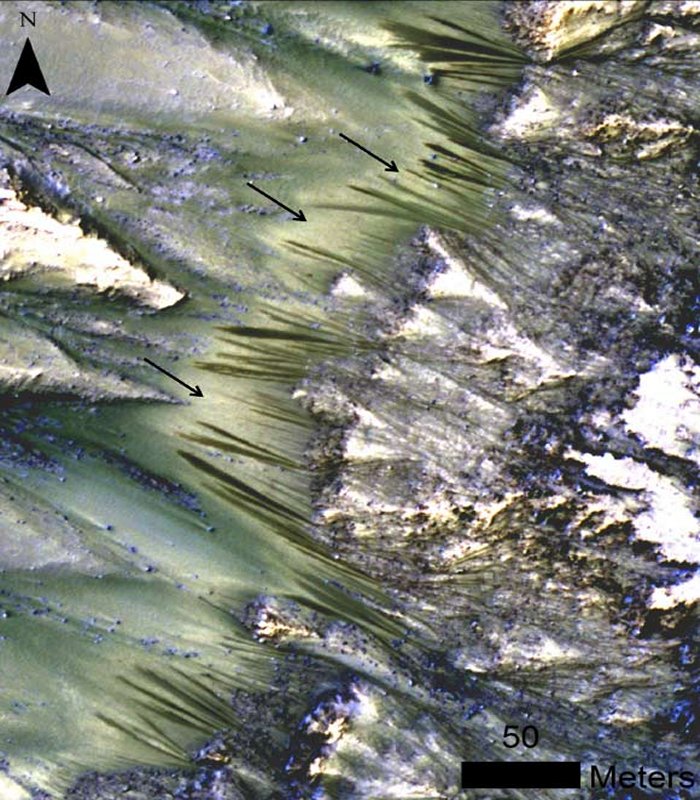MessageToEagle.com – There is water on Mars, according to new findings delivered by NASA’s Mars Reconnaissance Orbiter (MRO). It flows across the surface of the Red Planet from time to time, but it exists.
It’s a potential breakthrough in the search for life.
“Our quest on Mars has been to ‘follow the water,’ in our search for life in the Universe, and now we have convincing science that validates what we’ve long suspected,” said Dr John Grunsfeld, a former astronaut who now leads NASA’s Science Mission Directorate.

Credit: NASA/JPL-Caltech/Univ. of Arizona
“This is a significant development, as it appears to confirm that water – albeit briny – is flowing today on the surface of Mars.”
Scientists have long observed mysterious streaks clearly seen in several locations on the Red Planet. They often have been described as possibly related to liquid water.
Now, new MRO findings confirm that these darkish streaks appear to ebb and flow over time.
They darken and appear to flow down steep slopes during warm seasons, and then fade in cooler seasons.

They appear in several locations on Mars when temperatures are above minus 10 degrees Fahrenheit (minus 23 Celsius), and disappear at colder times.
“We found the hydrated salts only when the seasonal features were widest, which suggests that either the dark streaks themselves or a process that forms them is the source of the hydration,” said Lujendra Ojha of the Georgia Institute of Technology (Georgia Tech) in Atlanta, lead author of a report on these findings published Sept. 28 by Nature Geoscience.
In either case, the detection of hydrated salts on these slopes means that water plays a vital role in the formation of these streaks, according to Ojha.
It remains unclear where the water comes from but it may rise up from underground ice or salty aquifers, or condense out of the thin Martian atmosphere.
This false-color animation simulates a fly-around look at one of the places on Mars where dark streaks advance down slopes during warm seasons, possibly involving liquid water or brine. This site is within Hale Crater. The streaks are roughly the length of a football field.
But we have to remember that once upon a time, Mars had water.
“Mars is not the dry, arid planet that we thought of in the past,” said Nasa’s Jim Green. “Liquid water has been found on Mars.”
It has been known for many years that Mars has water frozen at its poles, in its thin atmosphere, and, most recently, in tiny puddles that appear to form at night on the surface.
The earliest missions to Mars revealed a planet with a watery past. Pictures sent back to Earth in the 1970s showed a surface crossed by dried-up rivers and plains once submerged beneath vast ancient lakes.
Earlier this year, Nasa presented evidence of a huge ocean that might have covered half of the planet’s northern hemisphere in the distant past.
For now, researchers are focused on learning where the water comes from. Porous rocks under the Martian surface might hold frozen water that melts in the summer months and seeps up to the surface.
Source: NASA






